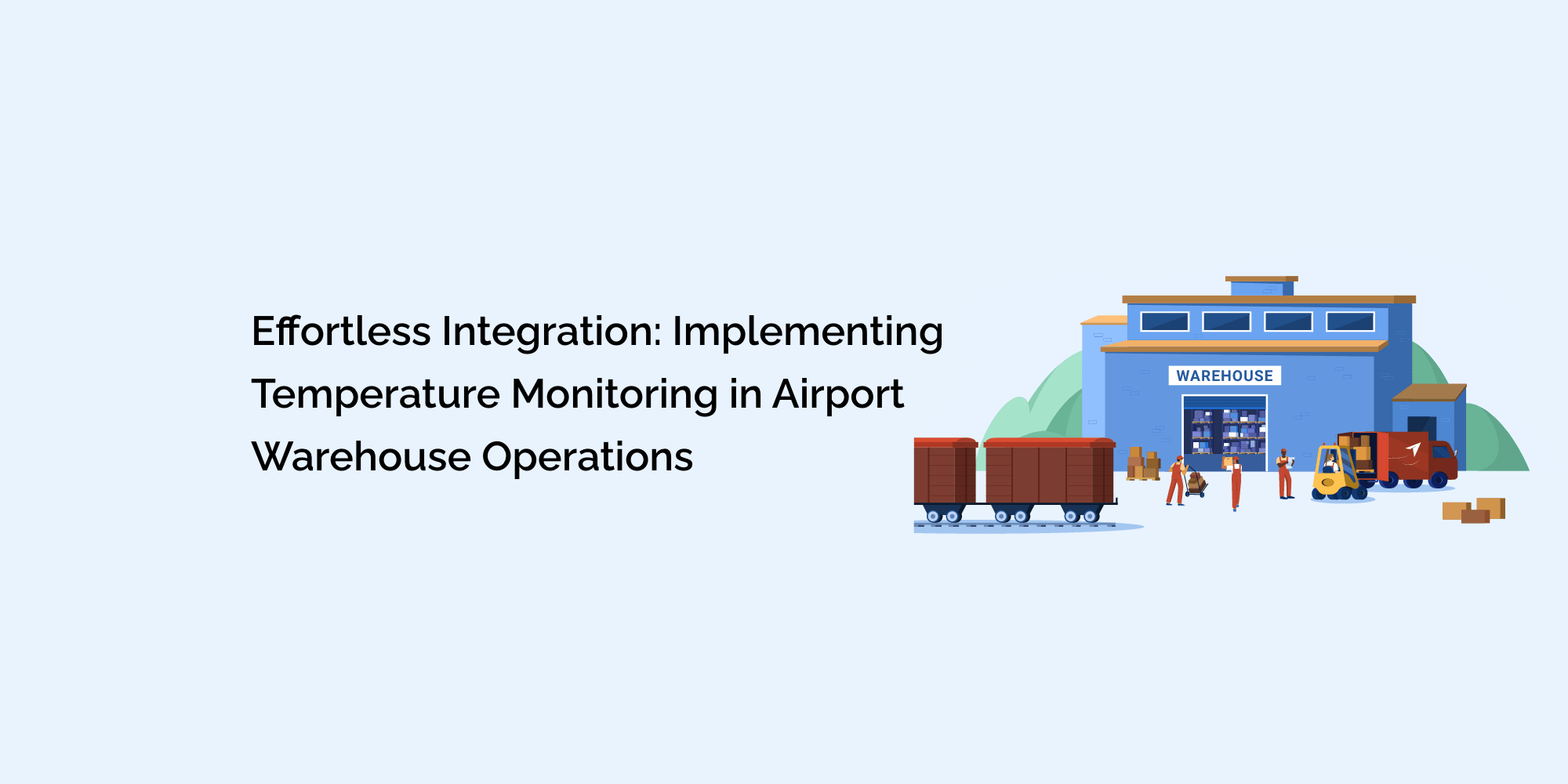In the fast-paced world of airport warehouse operations, maintaining a seamless supply chain is of paramount importance. Ensuring the quality and safety of goods in transit is a complex task that requires innovative solutions. One critical aspect that significantly impacts the storage and transportation of various goods is temperature control.
The improper handling of temperature-sensitive items, such as pharmaceuticals, fresh produce, and electronics, can lead to spoilage, reduced shelf life, and even potential hazards. To tackle these challenges, airports are increasingly turning to temperature monitoring solutions to streamline their operations and safeguard the integrity of the cargo.
In this blog, we will explore the benefits and implementation of temperature monitoring systems in airport warehouses, examining how they revolutionize the industry.
1. Understanding the Importance of Temperature Monitoring:
Temperature-sensitive goods require precise handling and storage conditions to ensure their quality throughout the entire supply chain. In an airport warehouse setting, temperature fluctuations can occur due to various factors, such as weather conditions, storage location, and transportation delays. An in-depth understanding of the importance of temperature monitoring will highlight the need for integrating such systems into airport operations.
2. Challenges Faced in Airport Warehouse Operations:
Before delving into the benefits of temperature monitoring, it is crucial to identify the challenges faced by airport warehouse operators. These challenges include maintaining real-time visibility, adhering to compliance regulations, preventing product wastage, and minimizing operational costs. By analyzing these issues, we can better comprehend the role temperature monitoring plays in overcoming them.
3. The Advantages of Temperature Monitoring Systems:
a) Enhanced Product Quality: Temperature monitoring systems ensure that goods are stored and transported within the required temperature ranges, preserving their quality and extending their shelf life.
b) Compliance and Regulatory Requirements: Airport warehouses must comply with various regulations, such as Good Distribution Practice (GDP) and Good Manufacturing Practice (GMP). Temperature monitoring systems aid in meeting these stringent requirements and facilitate smooth audits.
c) Real-time Visibility: Advanced temperature monitoring solutions provide real-time data, enabling warehouse managers to track the status of temperature-sensitive goods at any given time, leading to improved decision-making and efficiency.
d) Cost-effectiveness: By reducing product spoilage and wastage, implementing temperature monitoring systems results in cost savings for airport warehouse operators.
4. Types of Temperature Monitoring Systems:
There are various temperature monitoring solutions available in the market, each catering to specific needs. This section will explore different types of systems, such as data loggers, wireless sensors, and cloud-based monitoring platforms. Understanding their functionalities will help warehouse operators choose the most suitable option for their specific requirements.
5. Key Factors for Successful Integration:
a) Compatibility and Scalability: Implementing a temperature monitoring system requires compatibility with existing warehouse management systems (WMS). The system should also be scalable to accommodate future growth.
b) Ease of Installation and Use: The success of any integration lies in its simplicity. The chosen temperature monitoring system should be easy to install and use, requiring minimal training for warehouse staff.
c) Data Security and Privacy: Given the sensitive nature of temperature-sensitive cargo data, robust security measures must be in place to protect against unauthorized access and data breaches.
d) Integration with Analytics and Reporting Tools: To gain valuable insights and make data-driven decisions, the temperature monitoring system should seamlessly integrate with analytics and reporting tools.
6. Case Studies:
Presenting real-world case studies of airports that have successfully integrated temperature monitoring systems will illustrate the tangible benefits of such implementations. Case studies will cover the challenges faced, the solutions adopted, and the measurable outcomes achieved.
7. Future Trends in Temperature Monitoring:
As technology continues to evolve, temperature monitoring systems are also expected to advance. This section will explore the potential future trends, such as the incorporation of artificial intelligence, Internet of Things (IoT) sensors, and predictive analytics.
Conclusion:
Temperature monitoring in airport warehouse operations is no longer a luxury but a necessity for maintaining the quality and safety of temperature-sensitive goods. Through this blog, we have comprehensively explored the benefits, challenges, and implementation considerations associated with temperature monitoring systems.
As the industry moves forward, it is imperative for airport warehouses to embrace these solutions and ensure a smooth and efficient supply chain for temperature-sensitive cargo. By doing so, airports can enhance customer satisfaction, meet compliance standards, and establish themselves as leaders in the global logistics landscape.








